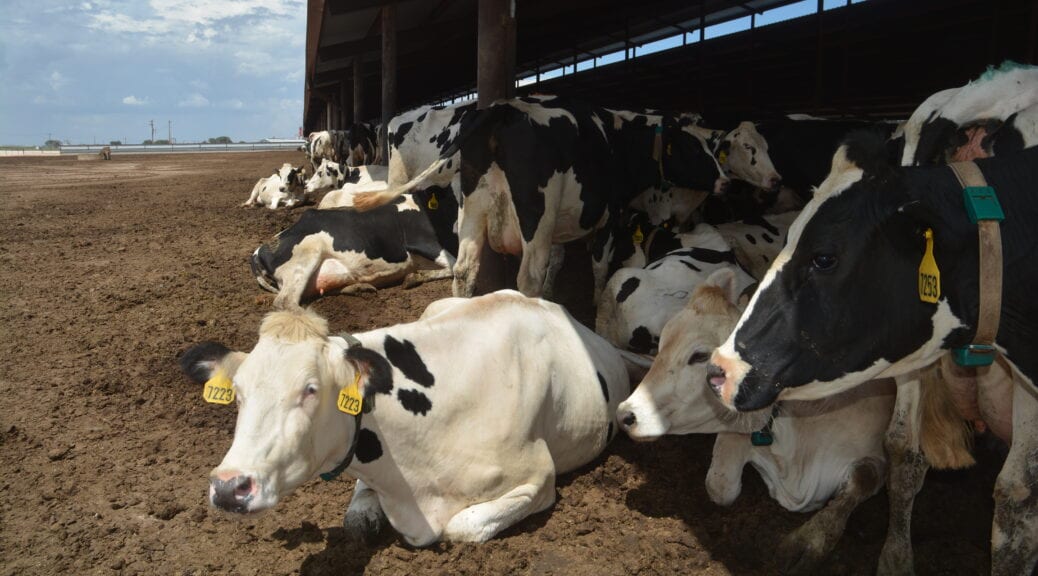
Dairy industry in recovery mode as COVID-19 takes a financial toll
By Darren Turley, TAD executive director
The dairy industry is facing one of the worst pricing outlooks we have ever seen, and most other ag commodities also are seeing a large reduction in their prices as well. The dairy industry is working to secure some aid from Congress, but it has been slow to materialize.
I urge you to contact your U.S. representative and ask him or her to include agriculture in Coronavirus Aid, Relief, and Economic Security Act, also known as the CARES-2 Act, currently under discussion. The Texas Association of Dairymen continues to advocate for several measures that could provide much-needed aid to dairy producers.
U.S. Secretary of Agriculture Sonny Perdue on May 19 announced details of the Coronavirus Food Assistance Program (CFAP), which will provide up to $16 billion in direct relief payments to U.S. farmers and ranchers impacted by the pandemic. CFAP will aid producers of agricultural commodities who have suffered a 5% or greater price decline due to COVID-19 and face additional significant marketing costs as a result of lower demand, surplus production, and disruptions to shipping patterns and the orderly marketing of commodities.
Beginning May 26, the U.S. Department of Agriculture (USDA), through the Farm Service Agency (FSA), will be accepting applications from agricultural producers who have suffered losses. The first payments should be issued the first week in June.
While the National Milk Producers Federation (NMPF) issued a statement saying it appreciates the aid, it said current aid levels “will be insufficient to meet the needs of milk producers and other agricultural sectors facing massive disruption from the coronavirus crisis. NMPF will continue to work with administration officials and members of Congress to achieve adequate aid for all dairy producers, whose projected losses of $8.2 billion, based on USDA data, place them among the hardest-hit U.S. agricultural commodities.”
In other aid efforts, U.S. Rep. Jim Costa of California has a proposal, included in the Heroes Act passed by the U.S. House, that covers pandemic relief for the California and U.S. dairy industry. It would help dairy producers by eliminating caps and limits on aid, streamlining and rewarding donations of products to food banks, and creating a national incentive program overseen by the USDA to reduce production by 10%. Some states are very opposed to a mandatory milk reduction, especially if is regulated by USDA, because of concerns it would begin the government’s ability to regulate production.
There is also federal legislation, supported by the Texas Bankers Association (TBA), that would assist agricultural borrowers by lowering the cost of credit for farmers and ranchers. In March, Rep. Steve Watkins of Kansas introduced H.R. 1872, the Enhancing Credit Opportunities in Rural America (ECORA) Act of 2019, and advocates are asking for its language to be included in the next round of coronavirus relief legislation.
According to the TBA, by removing this taxation, farmers and ranchers will be able to achieve the lowest possible financing costs for their operations, which will lead to increased cash flow for ag borrowers. As farms see their income decline, this would help ag producers acquire the credit needed to deal with the impact of the COVID-19 pandemic.
Other options being proposed are implementing the California milk standards for the entire nation in order to help move more milk solids during these trying times. California standards require a higher solids-not-fat (SNF) percent by volume and a higher percentage of fat in whole and 2% milk than the national fluid standards.
The never-ending split between the Western states’ large modern production facilities and the small farms in the upper Midwest and New England area has never been more apparent. Aid packages are centered around the smaller operations. Legislators are very reluctant to recognize where most of the milk is produced in this country and, more importantly, how milk is produced on modern large farms. A 100-cow farm – which dairy discussions center on – is not the normal for today’s dairy industry. For example, the average Texas dairy farm’s herd has 1,188 cows, ranking us eighth nationally.
We’re also seeing state dairy industries diversified in their own outlooks. For example, Oregon has some of the most stringent shelter-in-place rules, and the state’s governor has said expanding COVID-19 testing and contact tracing are crucial to reopening the economy. But Oregon producers shipping to Tillamook are seeing strong demand due to strong consumer brand loyalty and sales while sheltering in place. Aid is not as critical for these producers as it is for those in other Western states.
Both state-to-state differences, as well as the regional differences make it difficult for the industry as a whole to push for legislation or relief measures on the federal level.
Texans are strong and independent, and our dairy farmers are definitely independent as well. Texas has been the fastest growing dairy state for a few years now, and we will continue to be when things return to normal buying patterns. I have just seen a new forecast on Chicago Mercantile Exchange dairy prices for the rest of the year, which shows prices at or at least close to breakeven. As restrictions continue to lift on Texas restaurants and the rest of the food service industry, I expect prices to continue to improve.
The Texas Association of Dairymen continues to work to represent your needs with decisionmakers, and I continue to pray for our dairy families in these uncertain times.